How to have a smaller impact on our small pond wildlife
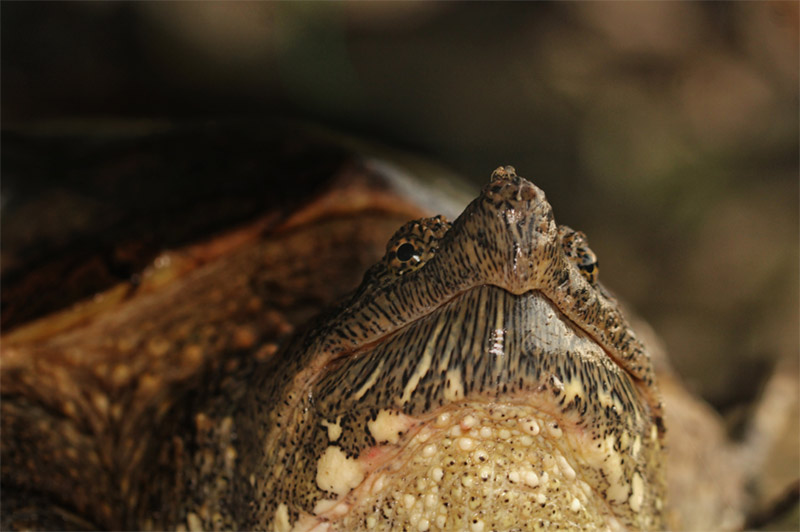
Reducing impacts of freshwater fishing on non-target wildlife
Take a second and try to imagine that you are a freshwater turtle. You are slowly making your way along the bottom of a murky pond, searching for your next meal, when there in front of you is a tasty little snack – maybe it’s a freshwater shrimp. You approach slowly, carefully.. And SNAP! You’ve got it! But wait, what is happening, something is pulling you by your mouth from the water, you fight back but there is a sharp tugging in your mouth. Soon, you are pulled from the water and are in the hands of a confused fisherman. You are frightened and you struggle to break free…
Now, let’s put ourselves in the fisherman’s shoes. They didn’t want to catch a turtle! They were just looking for a catfish! What do they do now? And what could they have done differently?
Freshwater fishing is a popular sport in much of the world, and it can actually help protect wild areas and stimulate the economy of places with good fishing sites. Unfortunately, sometimes non-target wildlife, meaning not the species being fished for, is injured in the process, through getting accidentally caught or by being tangled in discarded fishing line.
Warning: Some images in this article contain injured wildlife and may be unpleasant.
What animals are negatively impacted by freshwater fishing? How?
If you are fishing at a great location that happens to have a lot of fish, that probably means that it is a fairly healthy system, which also means there is plenty of other wildlife there too. Unfortunately, this means that there are other things that you can catch by accident, or animals that can be harmed by any gear that gets left behind.
Animals that are predacious, or scavengers, like turtles, are very vulnerable to being caught by fishermen. The turtles are either waiting at the bottom of a pond/lake or they are actively searching for prey. When they come across bait, they chomp down, getting hooks caught in their mouths or even completely swallowing them.
Things like reptiles, birds, and even mammals can get entangled on left-behind fishing line or injured by discarded hooks or other gear that is left behind.
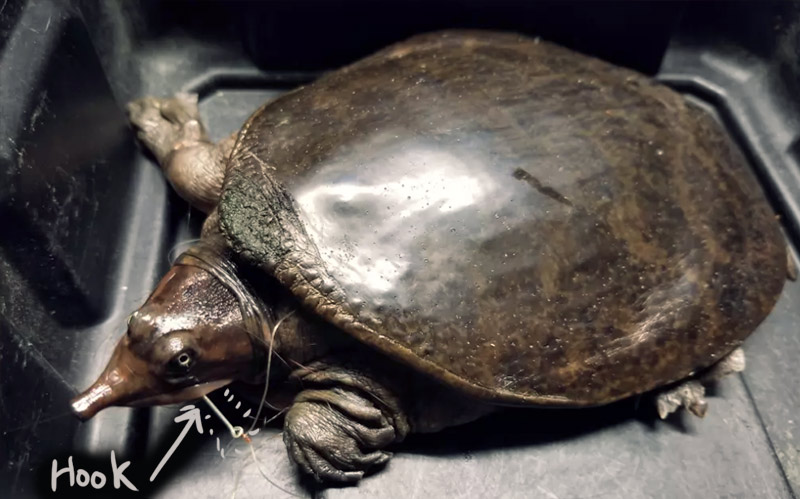
What are the consequences?
For turtles that get hooks stuck in their mouth or throats, the result can be fatal. Though most of these animals will not die quickly from their injuries, the hooks tend to limit the animal from being able to feed, so they slowly starve. Otherwise, these injuries can become infected or cause the animal to get caught on branches or rocks, and be unable to search for food or get away from predators.
Discarded hooks and fishing line can cause a wide range of issues for wildlife. Hooks and line can be ingested, causing similar issues as mentioned above, or animals can become entangled in them and trapped.
Though this is true for any wildlife, birds in particular are found tangled in line and are often found once it is too late, mainly from the struggle of trying to break free. Additionally, they sometimes use it in their nests which can cause their young to be strangled on it later on, or it is eaten which causes a range of internal issues..
How can we reduce these risks?
The good news is, there are a lot of ways that we can help mitigate this problem and reduce the risk of accidentally harming wildlife while enjoying recreational fishing. Let’s take a look.
1- Do not leave anything behind when you leave a natural area:
This is probably the biggest and easiest point, for both fisherman and non-fishermen. From fishing line, to hooks, to food wrappers and even food waste, if you pack it in, pack it out. If we want to keep natural areas healthy and pristine, so that we can continue to enjoy them, we have to make sure to never leave any trash behind. If there are bins to be used, use them, and if not, put it in a bag and carry it home with you.
With fishing line in particular, if your line gets tangled up, cut the line and unwind it, take the extra time to get it out. If your line is snagged on vegetation and you absolutely can not get it out, cut it as close to the hook as possible.
2- Consider using “lower-impact” hooks and lures:
What do I mean by this? There are a range of hooks that can be used for sport fishing and even fishing for food. Hooks that 1) are unbarbed and easier to remove 2) that rust away after time – so if they end up in a turtle they may rust away and allow it to recover 3) Lures that do not have multiple hooks – when an animal gets tangled in these it is extremely detrimental.
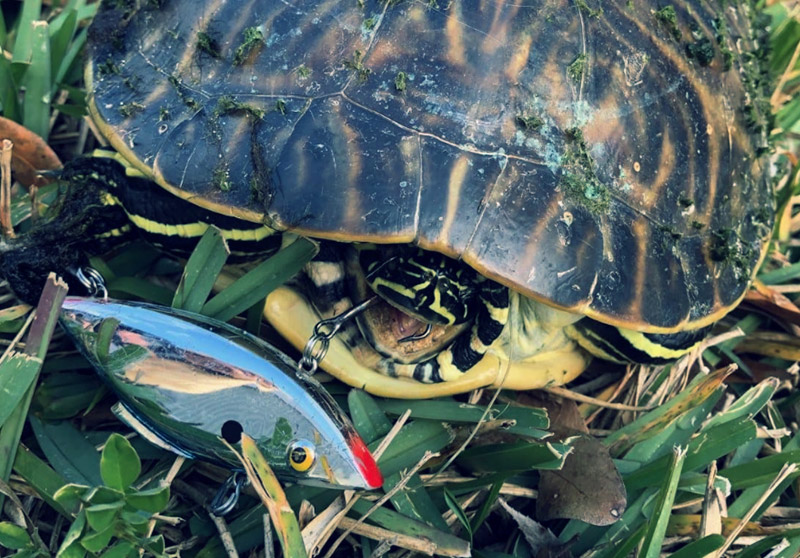
3- Consider not using bait (especially if it is toxic):
Of course bait is helpful to fishing, however, fish are often more visual predators, whereas turtles use scent to find their prey. Using lures instead of bait slightly lowers your chances of catching a fish, but greatly lowers your chances of catching a turtle. Make sure that your bait is not toxic to animals.
4- Respect the environment you are using:
Do not destroy vegetation, pollute or leave behind waste. A healthy and clean ecosystem helps protect wildlife and makes it so everyone can enjoy the area.
5- If you catch a non-target animal, take action!
See more below
What can you do if you catch a turtle by accident or find an injured turtle?
If you catch a turtle by accident, you have a few options depending on the scenario.
If you catch a turtle and get it onto land, and the hook is stuck, you can: Put the turtle into some kind of holding device (a box, bucket etc) and from there you can 1) Take it to the nearest wildlife rehabilitation center 2) call your rehabilitation center and they will come get it for you. Only remove the hook yourself if you are confident you can do so without harm to yourself or the animal.
These organizations are non-profit, so they won’t charge you for the care. However, if you are able to donate to the organization it really helps!
If the turtle escapes, call your nearest wildlife rehabilitation center to report it, so they can keep an eye on the situation and try to catch the animal to treat it.
If you think a turtle is on the end of your line, and can not get it to the surface or near you: You can cut the fishing line a bit longer, so that it is easier for the staff from the wildlife center to catch the turtle later, or to help that the hook does not go too far down into the turtle where it will require surgery. Call your local wildlife center immediately!
If you see any injured animal, such as a turtle with a fish hook in its mouth or a bird tangled in fishing line, call your local wildlife center for help. Save the number in your phone so it is a quick call away!
How else can you help?
There are many ways that anyone can help out with these problems:
Volunteer to do a clean-up in natural areas with your local community or even just with friends and family.
Volunteer at your local wildlife rehabilitation center, call and see what you can do to help!
Spread awareness! Education about these issues is a very important step to helping reduce them. When people are made aware of these problems, they are generally more willing to make changes. You can use social media, and even discuss in person about the problem. An important piece to this is to provide information in a receivable and approachable way, with evidence, to convince people to make a change, without starting an argument.
Donate money or resources to your local wildlife rehabilitation center. These centers are non-profit and depend on donations to keep running. If you want to donate supplies instead of money, you can contact your local center to see what it is that they currently need.
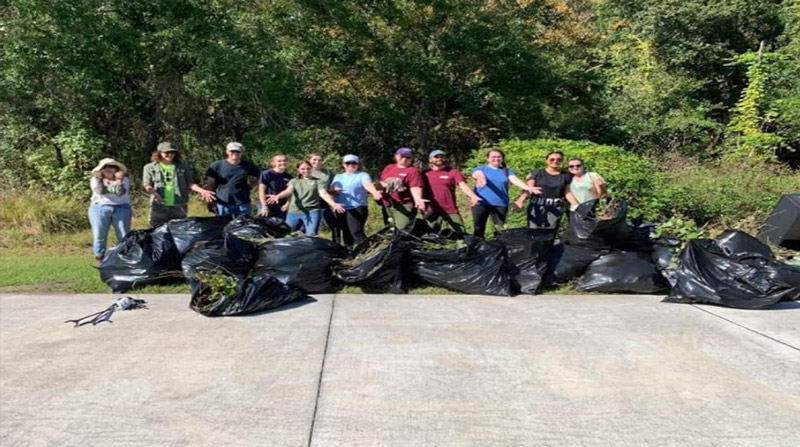
A special thanks to Nicholas McCarney and Kim Titterington for meeting with me to talk about this issue. If you are interested to hear more on this topic watch these interviews:
Learn more with the interviews:
Nicholas McCarney on fishing and its impact on non-target wildlife:
Kim Titterington (SwampGirl) on receiving wildlife with fishing related injuries and what to do if you find an injured animal:
Hey, what about the imaginary turtle!
… the fisherman places you into a dark box, and you lay motionless as you are transported to a wildlife rehabilitation center. The box opens and there are bright lights around you. Hands reach in to feel around your mouth, you are still afraid, but you do not move. In a quick and skilled motion, the hook is removed from your mouth. OUCH… but then relief. The box closes again. Darkness. Before you know it, the box opens and you are on the edge of your pond once again. You scurry from the box and into the water, as fast as your legs can take you, and swim to the far side of the pond. You had an unpleasant day, but you are now safe and healthy back in your home.
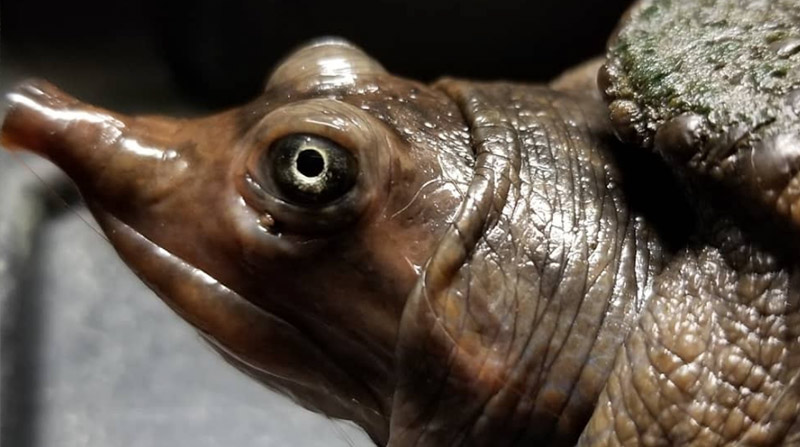
Take a look at some of these organizations that help with wildlife rehabilitation and donate if you can!
































































































